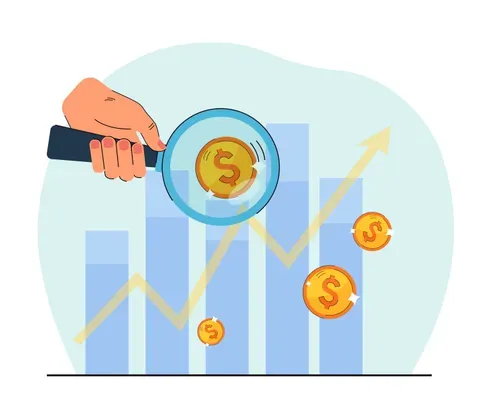
Tax types
Objective:
Students learn about the role that taxes play in society and deal with a specific type of tax. They recognize the importance of tax revenues for public services and reflect on their impact on everyday life.
Content and methods:
The worksheet begins with a puzzle to introduce the topic of taxes. The students then work out what taxes are and what significance they have. They deepen their knowledge by looking at a specific type of tax - such as income tax - and analyzing its characteristics. They can adapt the worksheet flexibly for different types of tax.
Skills:
- Understanding the function and significance of taxes
- Analysis of a specific type of tax and its characteristics
- Reflection on the social impact of tax revenues
Target group:
From year 9 onwards
66 other teachers use this template
Target group and level
From year 9 onwards
Subjects
Tax types

Who am I?
"I am a part of almost everything you buy, earn or own,
but you never see me directly.
I make sure that roads are built, but I don't build them myself.
I help those who have little, but I take from everyone.
You cannot avoid me, regardless of whether you buy, work or inherit something.
Without me, there would be no lights in the streets, no fire department, no schools.
Sometimes I'm the subject of great debate because not everyone thinks I'm fair.
Some people call me necessary, others call me a burden.
Who am I?"


Introduction
You guessed right! Today it's all about taxes. In this worksheet, you will find out what taxes are and look at a specific type of tax in detail.
📝 Fill in the gaps in the text with the appropriate words.
What are taxes?
📝 Drag the text elements to the correct positions.

Info
Now look at a specific type of tax in detail. Work through the following tasks.
Income Tax
Income tax is a direct tax imposed on the income of individuals or entities, and it serves as a primary source of government revenue. It is calculated based on the taxable income of the taxpayer, which includes wages, salaries, and other forms of earnings. For most people, the more money you earn, the higher the percentage of income tax you pay, making it a progressive tax.
The collection of income tax involves several steps. First, an individual's gross income is determined, which includes all earnings, such as salary, bonuses, rental income, and investment returns. From this gross income, certain deductions and exemptions are subtracted to arrive at the taxable income. These deductions might include expenses related to work, health insurance, or retirement savings.
Once the taxable income is calculated, the government applies a tax rate to determine the amount of tax owed. Most countries use a progressive tax system, where the rate increases as income rises. For example, a basic tax rate might apply to the first portion of income, with higher rates applied to income above certain thresholds.
Imagine Alex earns $50,000 a year. After accounting for deductions like student loan interest and retirement contributions, his taxable income is $40,000. The government allows a basic exemption of $10,000, meaning Alex pays tax only on $30,000. If the tax rate is 10% for the first $10,000 and 20% for the remaining $20,000, Alex would pay $1,000 on the first portion and $4,000 on the rest, totaling $5,000 in income tax.
Income tax is structured to ensure that individuals with higher earnings contribute more, which supports public services and infrastructure, promoting social equity.
📝 Make assumptions about what the taxes collected are used for.

Usage of Income Tax
Income tax is a crucial source of revenue for governments globally, funding a wide array of public expenditures and services that benefit society. The collected income tax is primarily used to finance essential public services such as education, healthcare, social security, and infrastructure development.
A significant portion of income tax is allocated to the education sector. This includes funding for schools, universities, and vocational training centers, ensuring access to quality education for all citizens. It covers expenses like teacher salaries, educational materials, and the construction and maintenance of educational facilities.
Healthcare is another vital area where income tax revenue is utilized. Governments use these funds to support hospitals, clinics, and public health initiatives, ensuring that citizens have access to medical care. This includes paying healthcare professionals, purchasing medical equipment, and funding research to advance medical science and improve public health outcomes.
Social security systems also benefit from income tax revenue. These systems provide financial assistance to the elderly, unemployed, and disabled, helping to reduce poverty and promote social stability. Income tax helps fund pensions, unemployment benefits, and other social welfare programs designed to support vulnerable populations.
Infrastructure development is heavily reliant on income tax funds. This includes the construction and maintenance of roads, bridges, public transportation systems, and utilities. A robust infrastructure is essential for economic growth and improving the quality of life for citizens.
Additionally, income tax supports public safety services such as police, fire departments, and emergency response teams. These services ensure the safety and security of the population, addressing both everyday needs and emergency situations.
Overall, income tax is indispensable for maintaining and improving the services and infrastructure that underpin a functioning society, promoting economic fairness and stability.
📝 Task
📝 Fill in the information sheet about the tax type.

✅ Example


